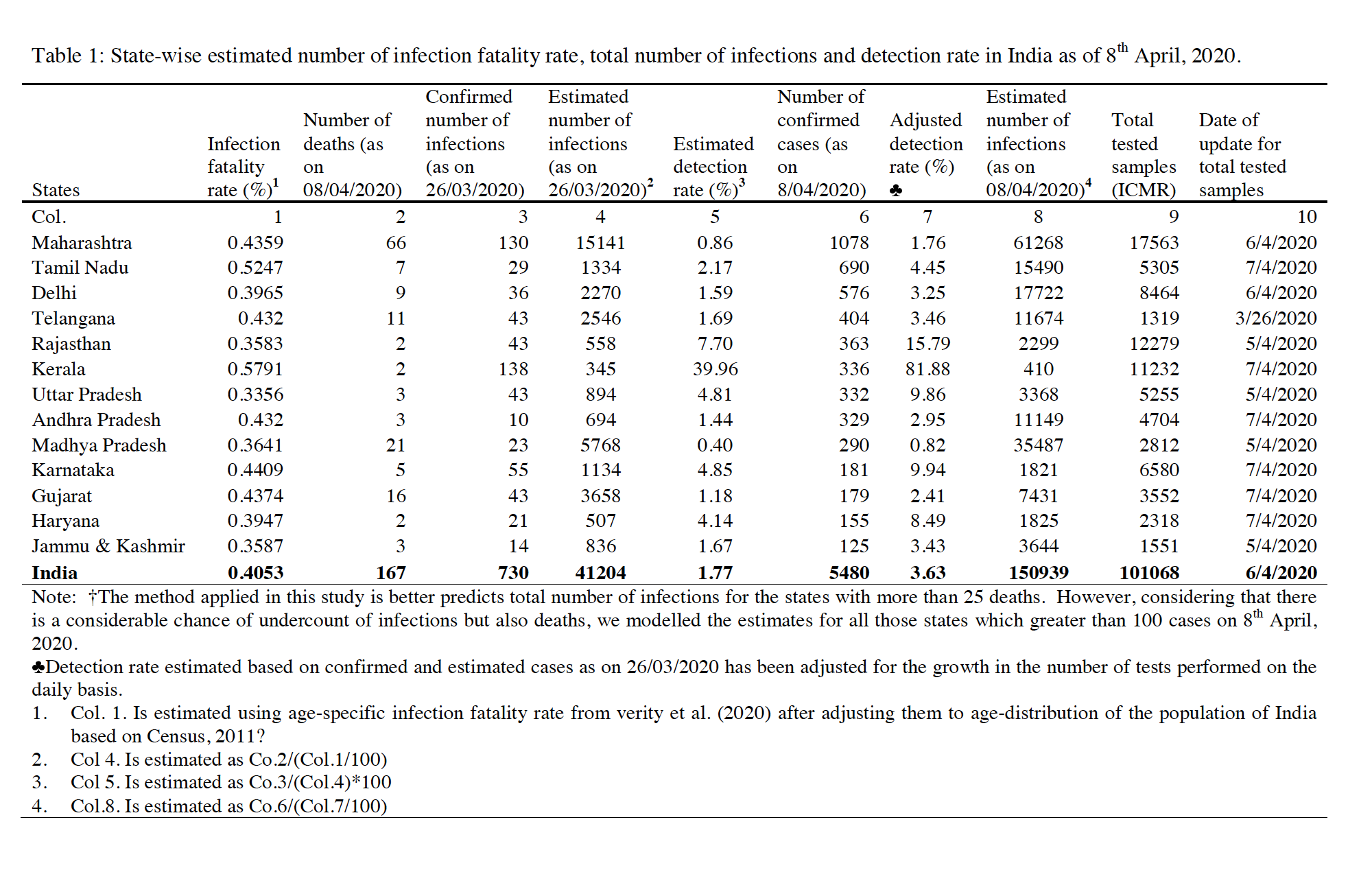On April 13, local time, India ’s new coronary pneumonia cases exceeded 10,000, and a total of 10444 cases were diagnosed. Since March 24, the total number of new crown diagnoses in India has increased about 20 times in 20 days, almost doubling in the past week. Will the number of confirmed diagnoses in India continue to grow? What is the actual infection? As a country with a population base of 1.3 billion, India’s epidemic situation has affected global nerves.
On April 11, Srinivas Goli, a researcher from the Institute of Indian Studies, University of Western Australia, Australia, and KS James, director of the International Institute of Population Sciences (IIPS), Mumbai, India, at MedRxiv, a preprint medical website According to the released study, as of April 8, the total number of new coronary infections in India may be around 159,939, rather than the 5,480 officially diagnosed on April 8.
Researchers pointed out that the detection rate of new coronary pneumonia infection in India is only 3.6%, which is lower than the world average of 6%, and the infection status of each state varies greatly. They suggested that India must improve its testing capabilities and conduct extensive testing.

Research estimates the number of new crown infections (red), the total number of test samples (green) and the detection rate of Indian crowns in various states of India, as of April 8, 2020 .

Research estimates the number of new crown infections (red), the total number of test samples (green) and the detection rate of Indian crowns in various states of India, as of April 8, 2020 .
Combining evidence from other countries, researchers believe that 85% of infected people in India may have mild symptoms and have not yet been hospitalized. They pointed out that the later detection of infected persons will increase the probability of requiring mechanical ventilation and intensive care, which will bring greater costs to the medical system. “Identifying and avoiding the need for intensive care for most infected patients as early as possible is an important way to avoid the overload of India’s limited medical resources.”
 The study used the model proposed by Bommer and Vollmer to evaluate the official confirmed data, and also used the age distribution data of India ’s population, death and diagnosis of new coronary pneumonia, and age-specific infection deaths Rate etc. Based on global evidence, the researchers hypothesized that the average duration of new crown patients from symptom onset to death was 14 days.
The study used the model proposed by Bommer and Vollmer to evaluate the official confirmed data, and also used the age distribution data of India ’s population, death and diagnosis of new coronary pneumonia, and age-specific infection deaths Rate etc. Based on global evidence, the researchers hypothesized that the average duration of new crown patients from symptom onset to death was 14 days.
 The study used the model proposed by Bommer and Vollmer to evaluate the official confirmed data, and also used the age distribution data of India ’s population, death and diagnosis of new coronary pneumonia, and age-specific infection deaths Rate etc. Based on global evidence, the researchers hypothesized that the average duration of new crown patients from symptom onset to death was 14 days.
The study used the model proposed by Bommer and Vollmer to evaluate the official confirmed data, and also used the age distribution data of India ’s population, death and diagnosis of new coronary pneumonia, and age-specific infection deaths Rate etc. Based on global evidence, the researchers hypothesized that the average duration of new crown patients from symptom onset to death was 14 days.
In addition to estimating the total number of new crown infections in India, the researchers also found that the distribution of infection detection rates across India is extremely uneven. The researchers estimate that in Maharashtra, the state with the largest number of new crown diagnoses, the new crown infection detection rate is only 1.8%, and the highest detection rate is Kerala, which is 81.9%.
According to the “Nature” news report, as of April 9th, India conducted a total of 144,910 new coronavirus tests, which is one of the countries with the lowest per capita test rate in the world, and even Some states have not reported any tests at all. Because there are not enough test kits, India is “relying on the power of the people” to fight the epidemic. “Thousands of medical staff are scattered throughout the country to track and isolate people who may have been in contact with the new coronavirus infection.”
In late January 2020, shortly after the first new crown infection occurred in India, the country ’s Integrated Disease Surveillance Program (IDSP) began to pay close attention to new crown cases. Hundreds of thousands of people are being monitored. This comprehensive disease surveillance program was previously used to track H1N1 flu and measles.
In fact, India is also seriously threatened by other infectious diseases. World Health Organization data shows that in 2018, the global estimated number of tuberculosis deaths is about 1.24 million, of which India has the largest number of deaths, reaching 440,000. In 2017, 435,000 people died of malaria worldwide, of which India accounted for 4%, and about 17,400 people died as a result.
At present, the Indian government is stepping up the detection and prevention of new coronavirus. On April 13th, the Indian Medical Research Council (ICMR) issued an announcement recommending that laboratories adopt the “consolidated detection method” for the detection of new coronaviruses in order to improve the detection capacity and quantity and save the detection cost. On April 14, Indian Prime Minister Modi announced an extension of the blockade period in a national speech. The blockade period originally scheduled to end on April 14 will be extended to May 3.